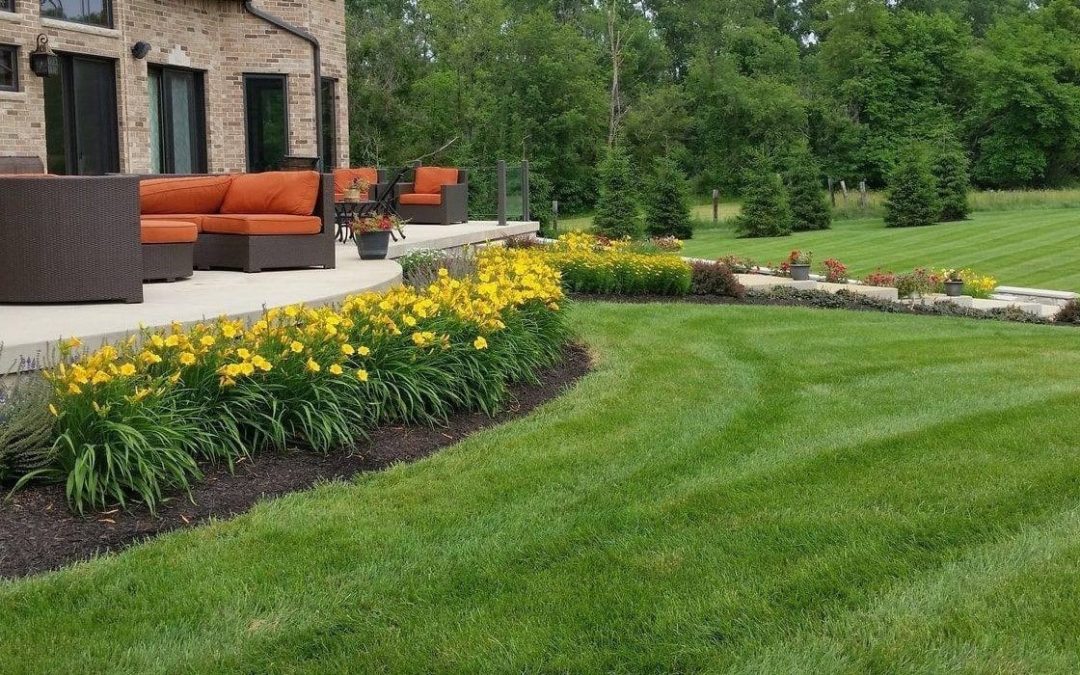Everyone is attracted to the idea of creating a low-maintenance garden and a breathtaking landscape design. By this concept, different groups of people understand different things: professional – that the garden will require simple, unskilled, but regular care; amateur – that there is practically no need to look after the garden.
A lot of articles have been written on the topic of how to create such a garden. All of them are based on how to bring plantings as close as possible to natural ones, to leave them to nature.
I bring to your attention a slightly different approach, which is based on many years of experience in planting private gardens in the climate of the middle zone and subsequently caring for them.
A garden is often created without thinking about how much time it will take to care for it, and whether the customer will be able to keep it exactly in the form that the author of the garden intended.
The landscape designer wants to return to the designed garden and make sure that the idea works, the customer is still happy, and take the long-awaited photographs for the portfolio.
Based on our experience, every year we move away from complex details, simplify projects, and constantly think about how to make garden care easier.
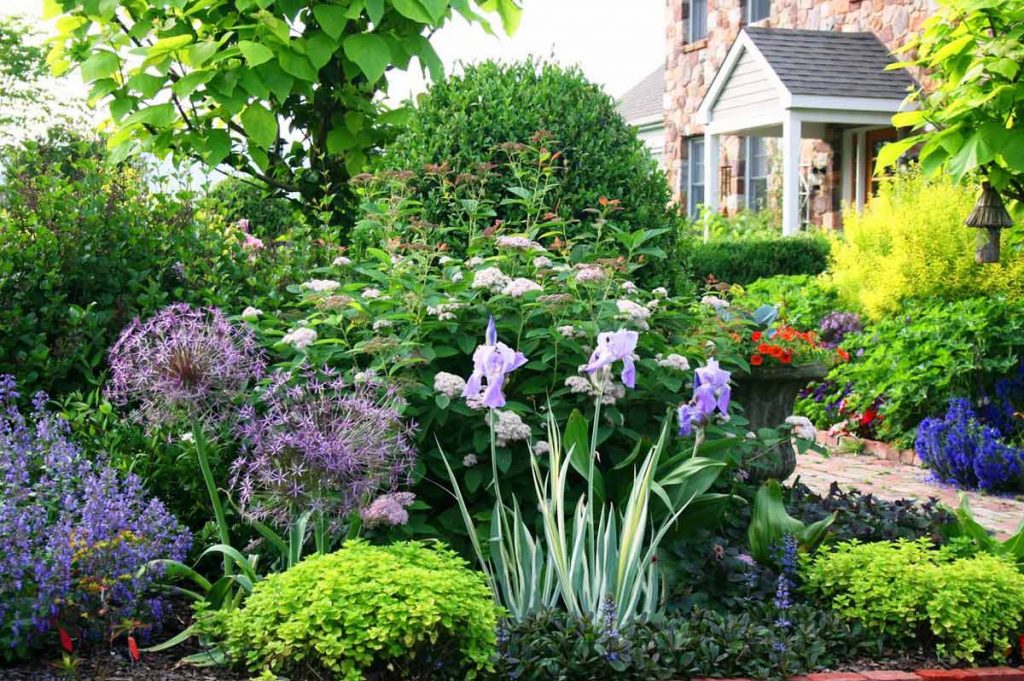
The customer is increasingly looking after his garden himself or managing unskilled workers, so it is important to lay out the garden in such a way as to make his work easier.
I will try to formulate point by point all the accumulated experience, which boils down to minimizing the amount of complex professional work in the garden:
Table of Contents
- 1 Fewer Varieties and Easy Formations
- 2 Choosing Low-Maintenance Perennials
- 3 Quicker Closure and Reduced Weeding
- 4 Avoiding Narrow Lawn Strips and Embracing Low-Maintenance
- 5 Optimal Widths for Easy Maintenance and Accessibility
- 6 Creative Surroundings for Winter Charm
- 7 Monthly Instructions and Essential Tools for a Flourishing Garden
- 8 Disease Prevention, Pruning Tips, and Landscape Design
Fewer Varieties and Easy Formations
1. Reduce the assortment list: the fewer items, the easier it is to remember all the manipulations associated with care.
2. Plantings with simple forming trimmings (hedges, balls, cubes) are a good architectural element and are not difficult to reproduce. Any unqualified specialist can learn how to cut such simple shapes.
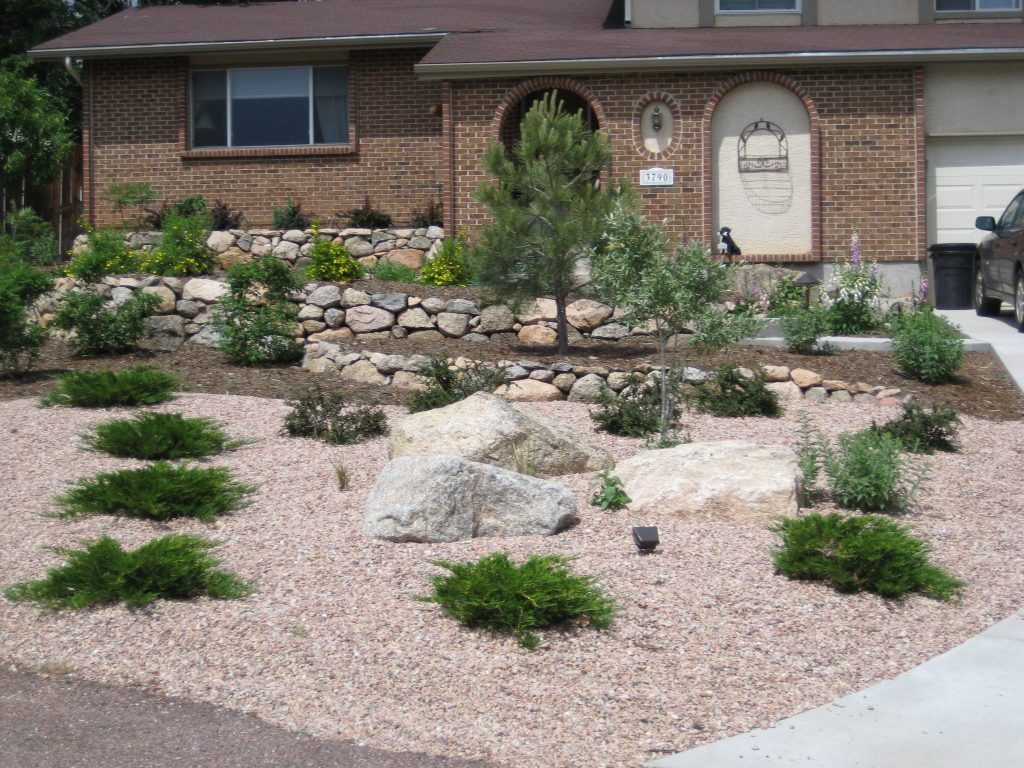
If you don’t want to complicate the gardener’s life, don’t plan hedges taller than 1.5 m: maintaining them will require additional equipment and time.
3. To form hedges and other trimmed forms, it is better to take not vigorously growing plants (willows, turf), but relatively slowly growing ones (cotoneaster, medium-sized spirea, thuja).
4. When planting flower beds, use a structure of groups of shrubs of various shapes, leaf colors, and flowering patterns. During the leafless period, shrubs retain the shape of flower beds and grow longer in one place without transplanting.
5. Multi-trunk tree forms allow you to create a whole mini-forest in a private garden at the same price. Plus, multi-trunk forms are not as tall as single-trunk forms.
Choosing Low-Maintenance Perennials
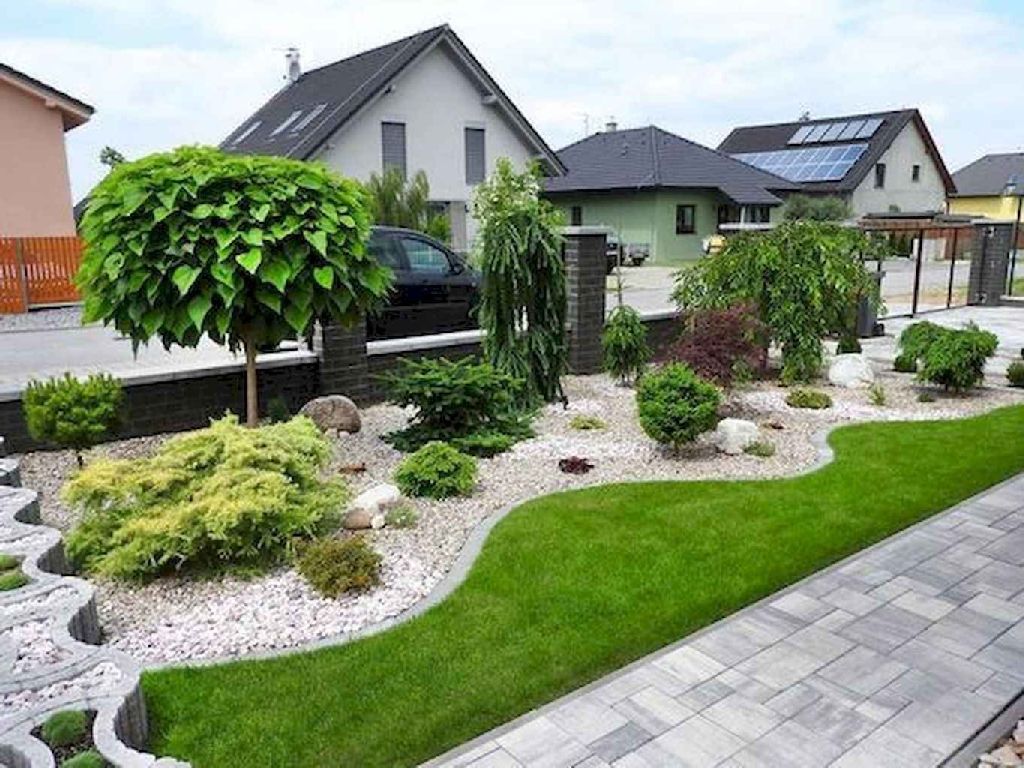
6. Flower beds must be planted from “real perennials” that grow in one place for a long time (7-10 years) and do not require frequent division or replacement. And the easier it is to care for them (cut them once in the spring and fertilize them), the better.
Cereals are ideal in this regard. It is clear that it is difficult to make flower beds entirely from such simple perennials, but their number in the planting should prevail.
7. Do not put hedges of thorny bushes in the flower garden: it will be difficult to care for, and you will always come across pruned thorny branches. It is better to form a free-standing hedge from such species, when pruning it you can easily collect all the branches with a garden rake.
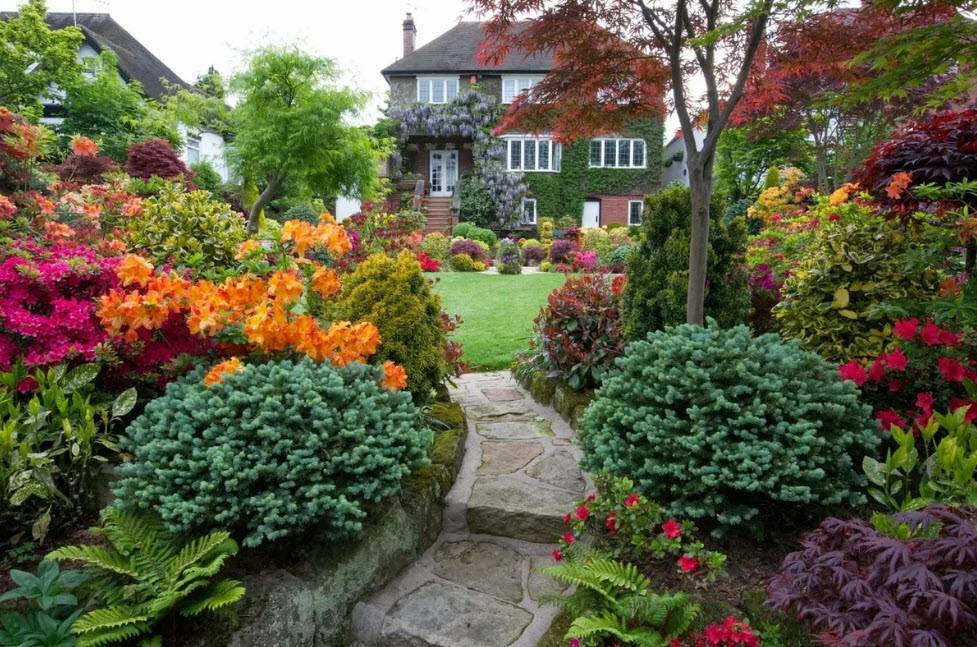
8. Provide a place to work around the trimming forms so that you don’t have to trim the hedge while standing in the thorny roses.
9. Design flower beds so that in the spring it is enough to walk with a lawn mower or trimmer (a lawn mower without a bag for collecting grass is even more convenient).
It is better to leave all the cuttings in the flower garden (this is both mulch and fertilizer). Flower beds grow quite quickly and hide all the chopped stems behind the leaves.
10. Mulching material is required. Do not leave the soil bare; cover with bark, lawn clippings, chopped stems, and other loose materials. Bare soil means loss of moisture, weeds, erosion, and compaction.
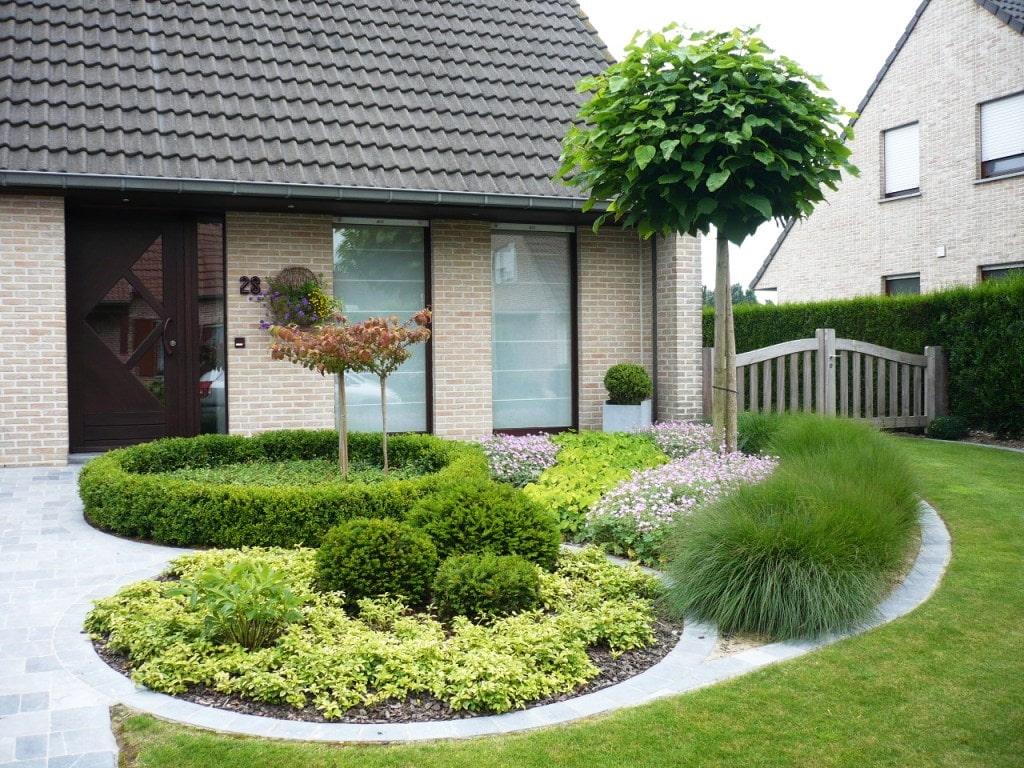
11. It is better to plant plants in large masses, this makes it easier to care for in bulk. Trimming a border of cotoneaster or a wide planting of spirea with a trimmer is easier than trimming each bush individually.
For a non-specialist, plants planted in large tracts are easier to care for, because… Against the background of monotonous plantings, the weed is visible. If the plantings are complex, with a large variety of species, then it is difficult for a non-professional to understand whether he is in front of a weed or so intended.
Quicker Closure and Reduced Weeding
12. If the shape of the plants allows for planting at a high density, then we plant more densely to speed up the closure and reduce the weeding time.
13. The lawn takes a lot of time to mow, but it is easy for an unskilled worker to understand. I made a list about when to comb when to fertilize, and how to treat weeds and – mow.
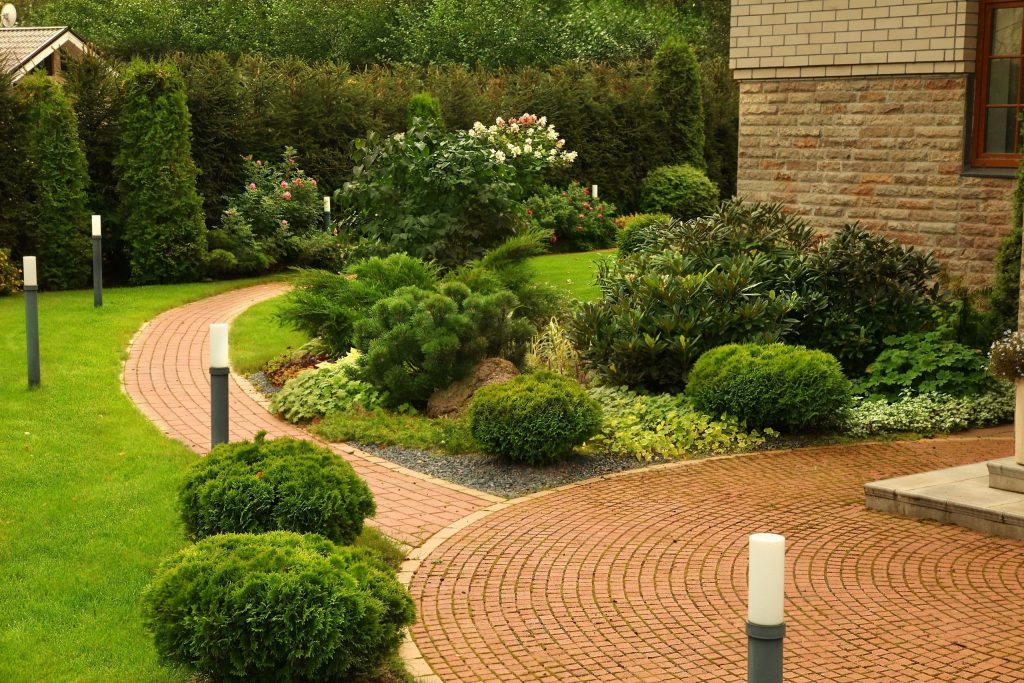
Nothing complicated. But we must always remember that the lawn in the garden has its functions. There is no need to try to fill all the available space with it: along the fence behind the bushes, under the trees, etc.
14. The lawn should be of a simple shape so that it can be mowed according to a simple pattern, without being distracted by lifting fallen plants from the flower beds, and without separately trimming the edge and the lawn around the bushes with a trimmer.
No plants in the lawn, a maximum of one tree and even this should be planted taking into account the passage of the lawn mower (with free space around).
15. An edge is required between the flower bed and the lawn so that the lawn mower can pass in one go without touching the plantings. Ideally, this is a border made of stone or wood.
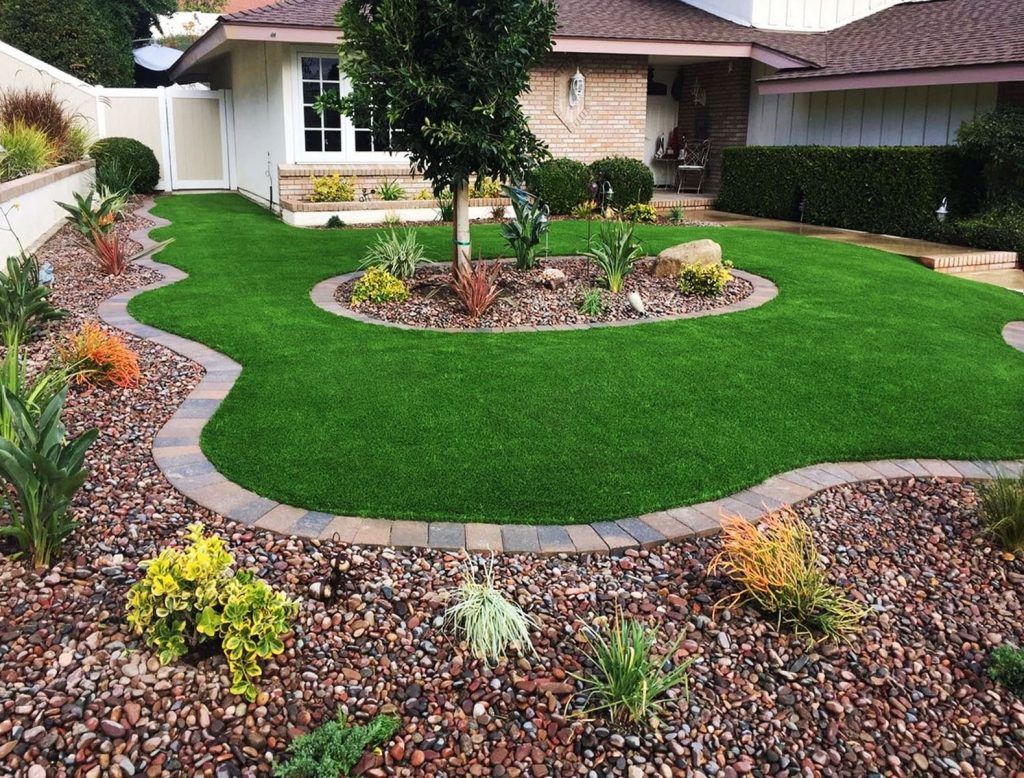
16. Lamps should not be placed on the lawn: this makes it difficult to mow. Place them either in plantings or on hard surfaces.
17. Now there are robotic lawn mowers. Therefore, it is necessary to provide a layout for the lawn and a place for charging the robot so that it can go to work without human assistance and freely work on the lawn.
With a well-planned lawn, automatic watering, and such a robot, you can forget about regular maintenance. All you need is weed control and fertilizer.
Avoiding Narrow Lawn Strips and Embracing Low-Maintenance
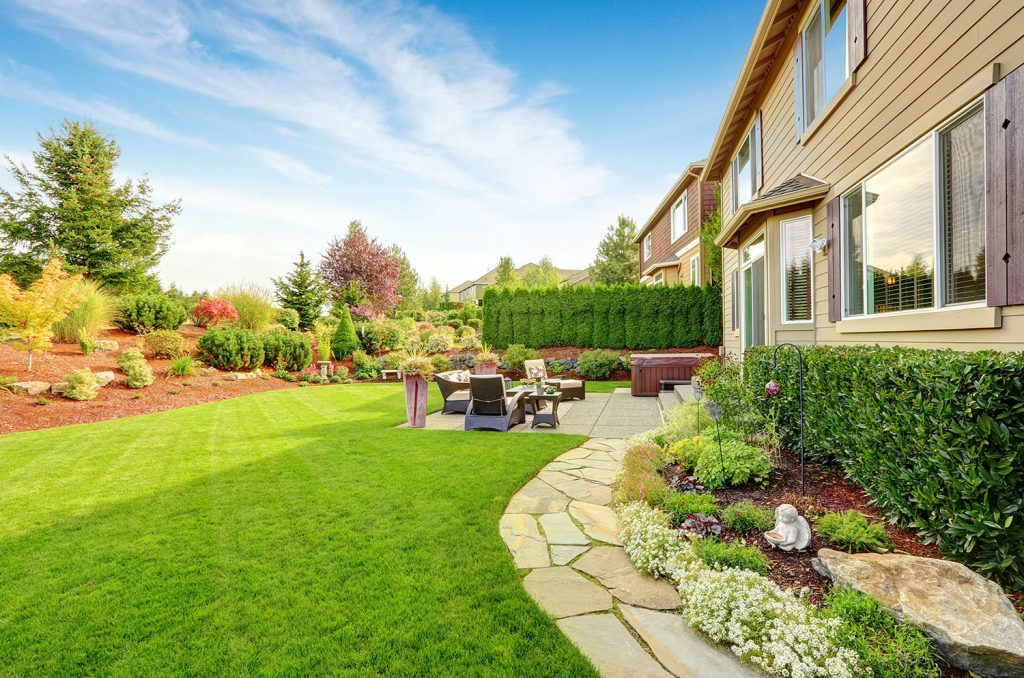
18. No narrow strips of lawn between plantings and hard surfaces! It only looks beautiful in photos with a freshly laid lawn.
How then to mow these 10 – 50 cm along the entire flower bed – with nail scissors on your knees, holding the falling apart stems in your other hand? Make the plantings wider, and duplicate the plants with one or two more rows.
19. If the idea requires a “lawn”, but you don’t want to expand the existing volume (for example, behind a fence) or the place is inconvenient for mowing (slope), then a carpet planting of a low creeping coniferous plant (for example, Cossack Broadmoor juniper or a variety of mountain pine) ) or low-growing deciduous shrubs.
20. In general, carpet plantings made from varieties of mountain pine and clipped massifs of low bushes (for example, birch-leaved spirea, and Japanese spirea) are good for our climate and minimal unskilled care.
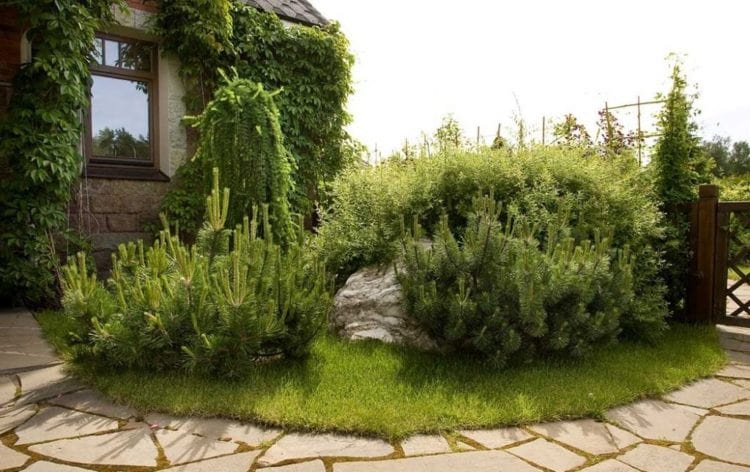
It is enough to cut these plantings several times a year “in bulk”, water them during drought and fertilize them a little. No complicated care.
21. It is better not to lay out a lawn in front of the house (if the front garden is small). It is inconvenient to carry a lawnmower from the backyard every time. And the lawn in the front garden should be as well-groomed as possible: after all, it is the “face” of the house.
Therefore, it is better to pave the front part of the site (parking lot, walking in heels, strollers) and fill the planting areas with the most stable forms that retain their decorative state for as long as possible.
22. When designing, remember that there are never enough hard surfaces. Each square meter of planting requires much more maintenance than hard surfaces (paving, decking, gravel).
Optimal Widths for Easy Maintenance and Accessibility
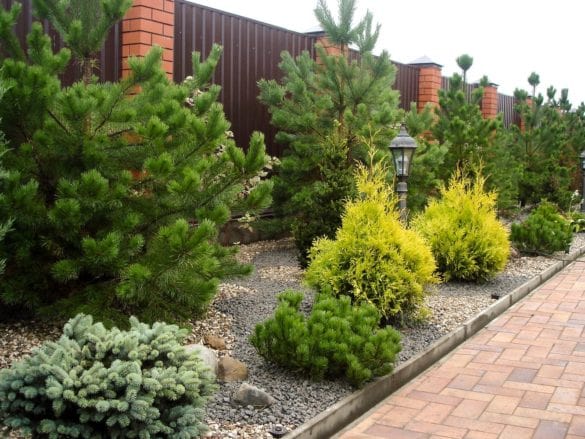
23. Don’t skimp on the width of the paths. Plants grow and “crawl out” onto the paths. For me, everything that is already two meters is not a path, but a technical path. If you want to save on material, then it is better to lay expensive solid materials in front of the house and make the paths in the garden itself from bulk, cheaper materials.
Narrow paths are especially common in vegetable gardens. All the vegetables are growing, making it inconvenient to move between beds. Leave passages of at least a meter: this is convenient both for care and for ventilating crops, and you can carry a wheelbarrow even during the peak season.
24. In certain areas of the site where you least want to do maintenance (narrow passage between the house and the fence, parking, technical places) it is better to plant dense, uniform plantings of shrubs with a thick layer of mulch, including crushed stone (for reliability, you can put geotextiles under the crushed stone) .
25. The easiest way to clean paved paths is with a pressure washer (it removes both moss and weeds). Quick and effective, and no need to use chemicals – everything is simply washed off into the plantings.
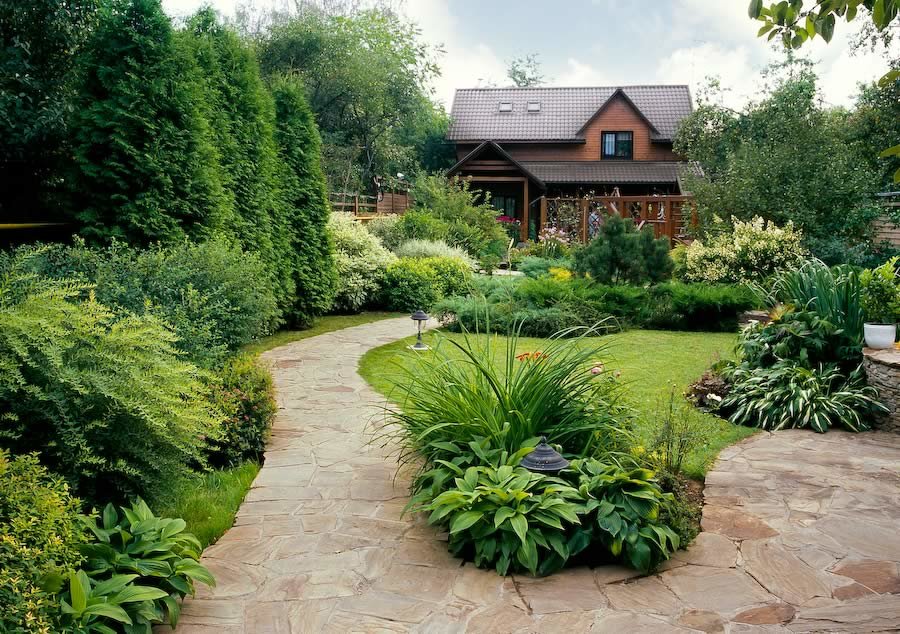
26. Hide existing “household facilities” (septic tank hatches, wells, and other communications) in the clumps of flower beds. There they are less noticeable and do not require special mowing.
27. Use only disease-resistant plant varieties. If species forms often get sick, use specially bred varieties to solve this problem. Convince the customer that the variety is not your whim, but the pinnacle of the work of breeders and nurseries.
Also, plant strong plants that can withstand wind and rain. It is better to avoid capricious crops altogether (unless the customer is a collector).
28. Follow the news from local nurseries; new varieties are constantly appearing there: more stable, neat, and maximally decorative.
Share your thoughts with nursery growers, and explain your design wishes: they need to grow what will be in demand.
Creative Surroundings for Winter Charm

29. If you plant a “New Year’s tree,” try to surround it not with bushes or a lawn, but with herbaceous perennials that are not afraid of getting wet.
The lawn and bushes will suffer – the “Christmas tree” will be decorated in winter, and people will walk around, crushing snow.
30. Plan plantings along the main paths so that snow dumps during clearing cannot break them or, compacted in ice, destroy whimsical plants.
You also need to take into account which direction the snow will fall from the roof next to the buildings: in such places, it is better to either leave hard surfaces (paving) or plant flowers and low shrubs to be trimmed, which are not afraid of faults.
31. If you want to use roses, then it is better to plant all kinds of rose hips and ground cover roses. They winter well, get a little sick, and do not require complex care, including pruning.
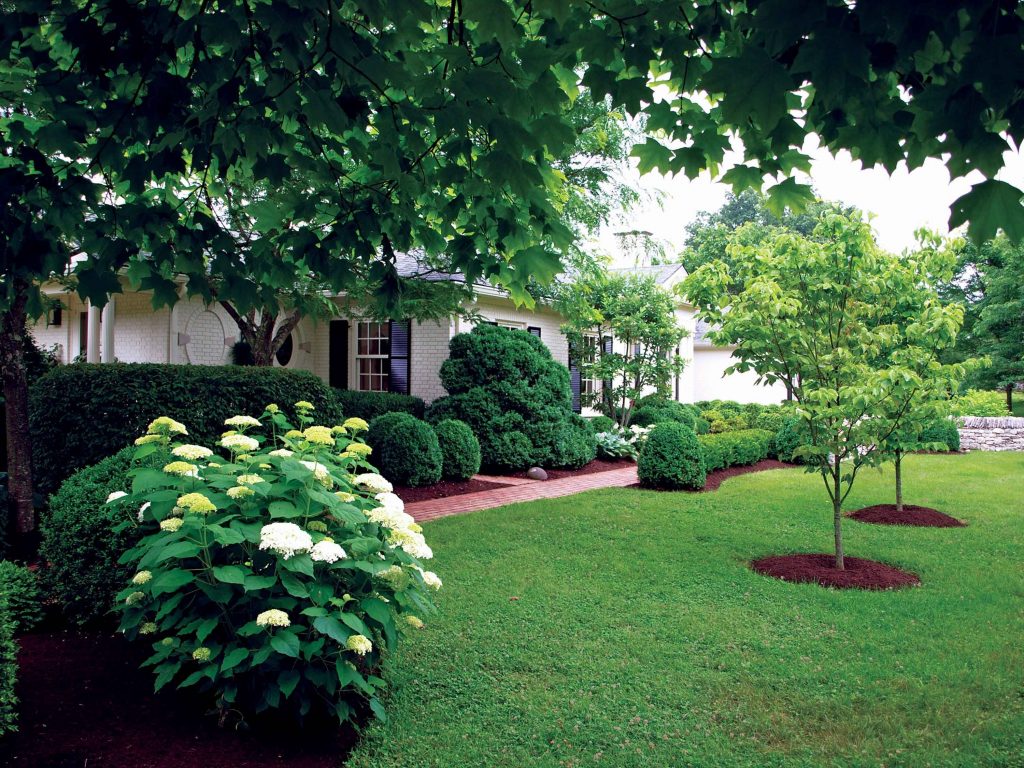
If the customer has other forms of roses (non-climbing), then we recommend removing all branches in the spring, leaving well-overwintered shoots with three buds from the ground.
32. An explanatory conversation with the customer is required that in the first few years regular private weeding will be needed until the plants close together, become stronger, and begin to suppress the weeds themselves.
The main thing is not to miss these first years, otherwise, the weeds will clog the flower beds and it will be almost impossible to clear them – you will have to replant them.
33. It is necessary to explain to the customer that it is better to entrust the work to professionals. Let it be an annual one-time spring care or two trips a year (spring-autumn). At least one visit every two years for a professional to do complex work and outline a course for permanent unskilled work.
Monthly Instructions and Essential Tools for a Flourishing Garden

34. Write garden care instructions to the customer as briefly and clearly as possible, month by month. Be sure to give analogs of drugs and fertilizers so that there is always a choice.
35. To care for the garden, the owner should purchase a good, reliable tool. An automatic tool (eg for hedge trimming) makes the job easier and faster.
36. Automatic watering for the entire site. You can set up different zones, depending on your habits and needs. Regular watering is important for your lawn and garden.
In the vegetable garden and flower beds, it is better to use drip irrigation (the stems of tall plants interfere with the operation of the nozzles).
37. If there are problems with regular watering on the site (behind the fence) or in places where you want to save on watering (behind buildings or in narrow places), it is better to add agroperlite when cultivating the soil before planting. It will accumulate water and gradually release it.
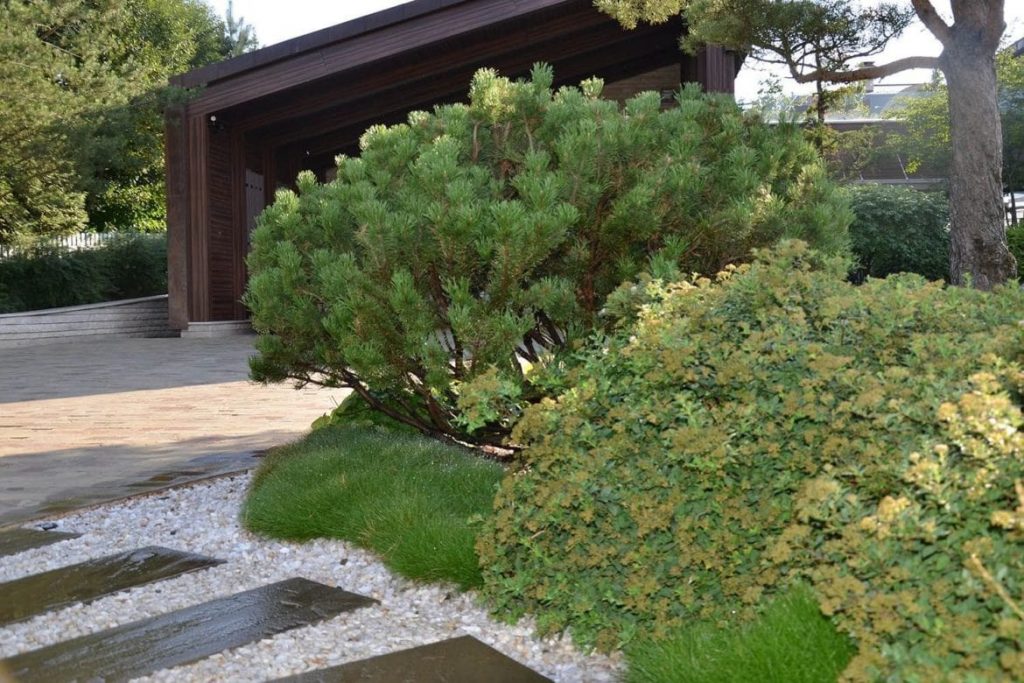
38. Do not plant thorny plants behind the fence: debris will constantly fly from the road there. Cleaning among thorns is not very comfortable.
39. When starting work on the site, be attentive to the presence of soil pests. Thus, in 2015-2016, a large amount of May beetle in the soil on a site in the Tula region destroyed 30% of the planting material, and another 30% of the soil was depressed.
Such a pest must be combated at the time of plowing the site and preparing the soil (it is necessary to apply the insecticide directly to the soil). Then it will be more difficult to fight him.
Disease Prevention, Pruning Tips, and Landscape Design
40. After planting, it is important to treat plants against diseases and pests (it is better to do this right on the day of planting). We often encountered the fact that immediately after landscaping one area, all the beetles and other pests moved onto it from neglected and untreated neighboring areas in search of recently planted plants.
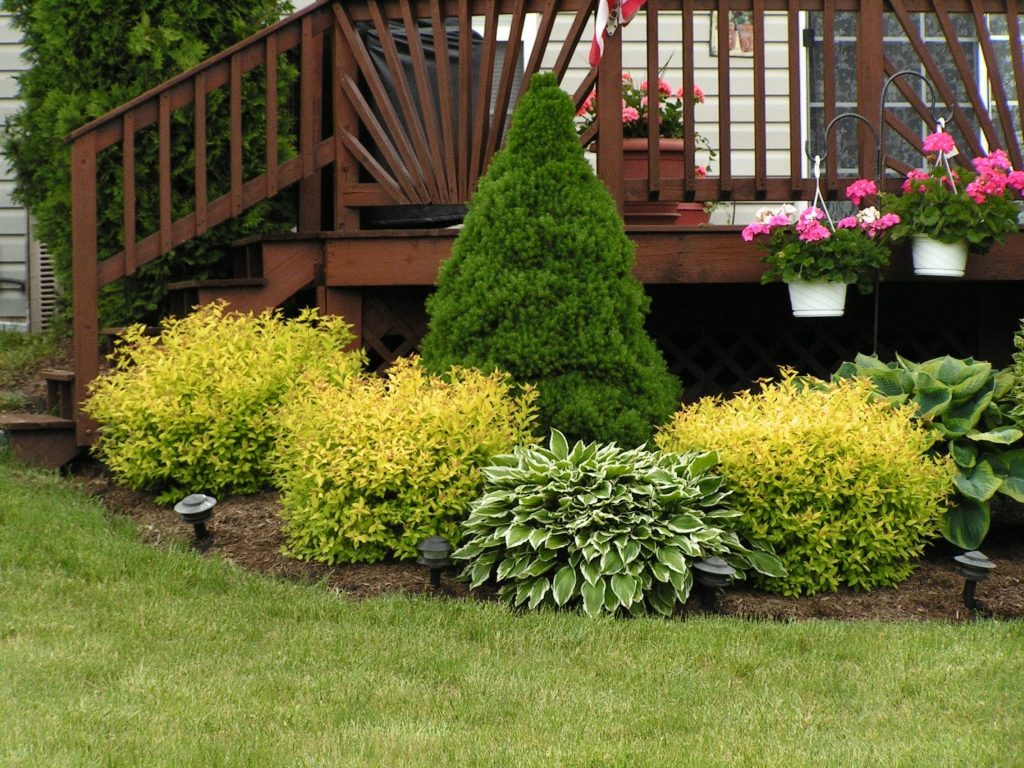
Nurseries process plants, but at the time of planting at your site, it is difficult to say which nursery performed the treatment and when. Therefore, it is best to process.
41. Monitor the orientation of the branches (whether they will interfere with the passage, or whether they will later run into a fence or power line), so that later you do not have to radically trim and spoil the shape of the crown.
42. Also, when planting, I always prune. This is necessary because During transportation, some of the branches break off and it is necessary to reduce the number of branches and leaves (especially for freshly dug plants).
Plus, it’s convenient to immediately shape a tree or bush directly to the needs of the object (for example, raise a standard or form an umbrella shape).
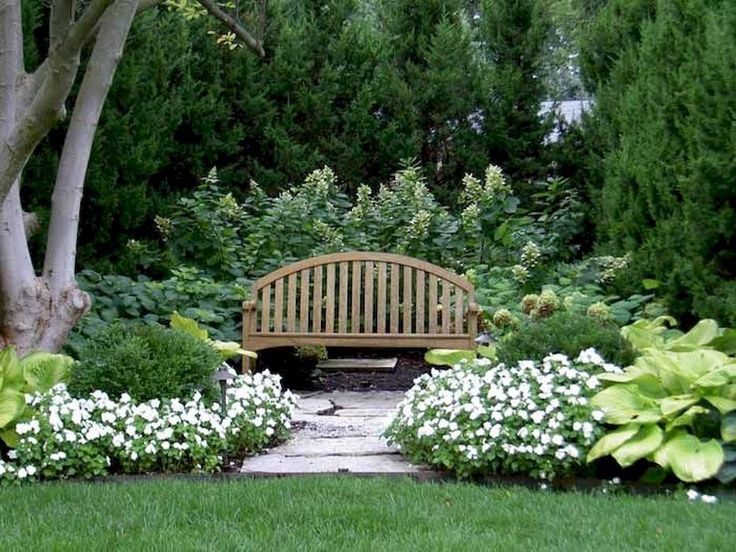
43. For the garden you need to purchase a stem chopper. With age, more and more waste will remain after pruning, so it is more logical to recycle everything and use it as mulch and natural fertilizer.
44. In a finished mature garden, try to avoid unnecessary digging, so as not to provoke the wild growth of weeds. Remove weeds, and add organic matter. Leave the soil loosening to the worms.
45. Explain to the customer that leaves are only removed from the lawn in the fall. Leaves are not removed during planting: this is a natural process.
46. If there are dogs on the site, then several points must be observed when designing:
- lay a “technical strip” along the entire fence of the site with a width of at least 50 cm (the dogs will constantly walk around their territory and trample down the plantings);
- Do not plant fragile plants along the edges of flower beds (where the dog might want to take a shortcut).
- Do not plant coniferous plants in the foreground of planting (dogs mark and the needles die).
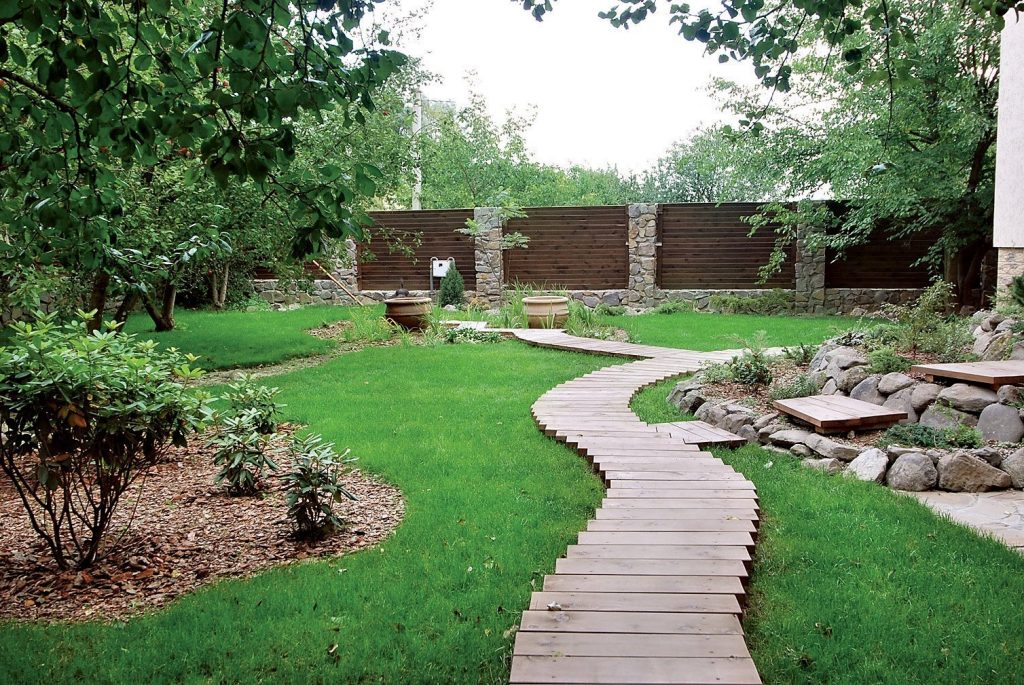
47. When setting up a sandbox for children, be sure to provide a lid, otherwise all the cats in the area will use it as a toilet.
By following these simple techniques, you will significantly reduce the amount of hassle for both the customer and yourself.

